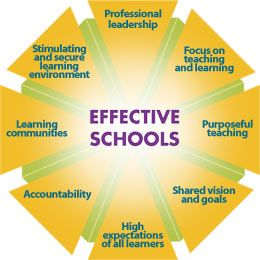Effective Training of Schoolteacher for Vision Screening: Strategic Control of Visual Impairment in Schoolchildren

Abstract:
Introduction: Vision helps to perceive details of surroundings and
regarded as the most important tool for learning for schoolchildren. World
Health Organization (WHO) has prioritized vision screening in schools to
decrease the burden of visual impairment (VI) in children. Any change in vision
can be identified by schoolteachers when a child has difficulty in seeing the
black board and reading books.
Aim: This study is aimed to see if visual screening training to
schoolteachers can effectively be used to detect VI in children.
Material & Methods: Visual screening of 1134 eyes of 567 students was
done by both the investigator and school teachers and results were formulated
and compared. There was no difference in result in 66.31 % eyes. Investigator
recorded better visual acuity (VA)+ with a 1-line difference in 14.55% eyes and
two lines difference 3.35% eyes. Whereas, teachers recorded one-line better VA
in 12.79% eyes and two lines better VA in 3% eyes.
Result: Out of 578 students from the three different schools of Allahabad
district, from class 3 to 6, majority (267) belonged to school 3, whereas
school 1 had the least (142) number of students.
Conclusion: The present study has identified the role of teachers as visual screeners
in schools. The procedure is cost effective and require only visual screening
training to the schoolteachers, so they can be used effectively for early
detection of reduced vision in schoolchildren.
Keywords: Visual screening, health screening, visual impairment, schoolteachers,
schoolchildren.
References:
[1] Census of India. District Census Handbook, Allahabad (2011). Census of
India 2011. Directorate of Census Operations, Uttar Pradesh. https://www.census2011.co.in/census/district/546-allahabad.html
[2] Dandona R and Dandona L. Refractive error blindness. Bull World Health
Organ. 2001; 79: 237–243.
[3] Dandona R, Dandona L, Naduvilath TJ, et al. Refractive errors in an
urban population in southern India: The Andhra Pradesh Eye Disease Study.
Invest Ophthalmol Vis Sci. 1999; 40: 2810–2818.
[4] Gene-Sampedro A, Gene-Morales A, Gené-Morales J, Bueno-Gimeno I and
Oliver-Huerta D. Visual Health in The Classroom. Conference Paper. Proceedings
of ICERI2016 Conference 14th-16th November 2016, Seville, Spain. Publication
at: https://www.researchgate.net/publication/311363145 DOI:
10.21125/iceri.2016.1411
[5] Hatch SW, John, McAlister WH, Block Sandra. Optometric Care within the
Public Health Community. Cadyville, NY: Published; 2009.
[6] He M, Huang W, Zheng Y, et al. Refractive error and visual impairment in
school children in rural southern China. Ophthalmology 2007; 114: 374–382.
[7] Health dialogue: A forum for the exchange of new and views on primary
health care in India. Inveno.2006; 44: 1.
[8] IAPB briefing paper: school health programme advocacy paper. London:
International Agency for the Prevention of Blindness; 2011. Available from: http://www.iapb.org/sites/iapb.org/files/School%20Health%20Programme%20Advocacy%20Paper%20BP.pdf
[cited 2016 Jan 17].
[9] Jose R, Sachdeva S. School eye screening and the National program for
Control of Blindness. Indian Pediatrics. 2009; 46: 205-08.
[10] Latorre-Arteaga S, Gil-Gonzalez D, Enciso O, et al. Reducing visual
deficits caused by refractive errors in school and preschool children: results
of a pilot school program in the Andean region of Apurimac, Peru. Glob Health
Action 2014; 7: 22656.
[11] Limburg H, Vaidyanathan K, Dalal HP. Cost-effective screening of school
children for refractive errors. World Health Forum 1995; 160: 173-178.
[12] Manjunatha S N and Krishnaswamy R. Effectiveness of training teachers in
vision screening of school children supported by foundation for the prevention
of disability. Annals of Community Health 2016; l4 (2): 35-39.
[13] Marsden J, Stevens S and Ebri A. How to measure distance visual acuity.
Community Eye Health. 2014; 27(85): 16. Retrieved from: https://www.ncbi.nlm.nih.gov/pmc/articles/PMC4069781/
[14] Minto H and Imran B. Low vision Devices and training. Community Eye
Health Journal. 2004 17(49): 6-7.
[15] Mohammad A.M. Finding children who are blind. Community Eye Health
Journal 2007; 20(62) 30-31.
[16] Pastorino N, Penerini Y. Programa de detección de déficit de la agudeza
visual en escolares sin patología ocular aparente." Archivos Argentinos de
Pediatría (Buenos Aires) 96.4 (1998): 236.
[17] Paudel P, Kovai V, Naduvilath T, Phuong H T, Ho S M & Giap N V.
Validity of Teacher-Based Vision Screening and Factors Associated with the
Accuracy of Vision Screening in Vietnamese Children. Ophthalmic Epidemiology
2016; 23(1): 63-68.
[18] Pizzarello L, Abiose A, Ffytche T, et al. VISION 2020: The Right to
Sight: a global initiative to eliminate avoidable blindness. Arch Ophthalmol
2004; 122: 615–620.
[19] Priya, A., Veena, K., Thulasiraj, R., Fredrick, M., Venkatesh, R.,
Sengupta, S., & Bassett, K."ision Screening by Teachers in Southern
Indian Schools: Testing a New All Class Teacher” Model. Ophthalmic epidemiology
2015; 22(1): 60-65.
[20] Taryam MO, Abadi KL, Hussein H, Faisal WL, Alam MW et al. Visual
Impairments and Eye Morbidities among School-Age Children (5 to 18 Years Old)
Qualitative Assessment in Dubai, UAE, 2016. Biomedical and Health Informatics.
2017; 2(2): 9-14.
[21] Vijayalakshmi P, Miralidhar R. Extent and impact of eye disease in
children in India and the status of Paediatric service delivery. Community Eye
Health Journal 2010; 23(72): 5127-28.

